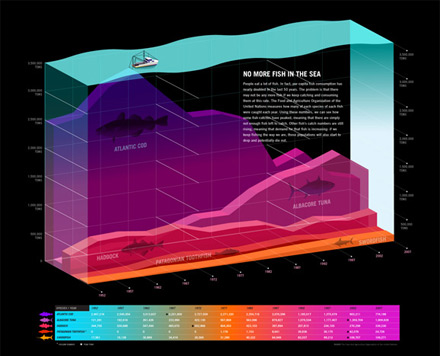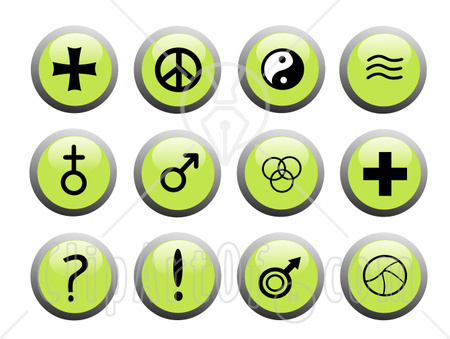Introduction: presentation of the idea
Reading and writing are one of the most important skills that are valued in society, as it is the key ground for a successful education. In terms of time, these skills are considered to be a relatively new ability. Reading and writing systems have developed as method of representation of spoken words to communicate across place and time. Reading is a complicated task that requires the decoding of written words, morphemes into speech forms called phonemes.
This sophisticated process involves a range of brain mechanism that promotes fluent and smooth reading and spelling. However, a substantial part of people have specific problems with acquiring the reading and writing skills, as they cannot adequately recognize and memorize graphic symbols. This disability is called dyslexia, reading disorder consisting in failing to reproduce the symbols and to memorize them. As these problems have numerous nuances and there are still no the unanimous decisions concerning the right definition. In general, the World Federation of Neurology put forward the following explanation of dyslexia:
A disorder manifested by the difficulty in learning to read, despite conventional instruction, adequate intelligence, and sociocultural opportunity. It is dependent upon fundamental cognitive disabilities that are frequently of constitutional origin (Kold and Whishaw, 2008, p. 691).
It should be stressed that dyslexia is connected with improper perception of images by human brain. This particularly concerns visual disorder, which means that the problem lies in difficult processing and decoding the visual information. There, these people suffering from reading and writing disorders have also difficulties in handling different kinds of visual information. In this respect, it is necessary to consider different types of visual communication that will best suit to dyslexic people. In particular, let us discuss such three approaches to visual communication, which are presented in the form of information graphics, and symbols and signs and define which are the most effective ones for disabled people to communicate their messages successfully.
Brief description of problem of dyslexia in correlation of three approaches of visual communication
Any type of visuals, in different manner, helps people in delivering a message effectively. A visual aid can grab the audience attention, which is the initial stage of successful communication. Secondly, a visual message is more efficient, than a verbal one, as can render the idea quicker and brighter. In this way, it can also enhance the communication and comprehension of a message. Finally, visual message can be expressive, as the possibility to perceive visually can greatly contribute to the main goal of communication – memorizing and learning the message, as visual tools are usually designed for influencing your mind and your memory (Wileman, p. 6.). There are different forms and representation of visual tools and each one influence differently depending on who perceives the message and what should be perceived.
In order to study the problem of dyslexia and define the reasons of how what the difference between reading and writing disorders and visual images is. In this regard, among the proposed approaches to visual communication, the best ones are those connected with training with visual perception – informational graphics, symbols and signs, color and shape. All these methods, on the one hand, are intermediaries between the images and letters, which is the main difficulty for dyslexic people. As dyslexic people have problems with literacy, they have problems with the recognition of signs as well, since the language and worlds are just combination of visual images. Therefore, the first to train disabled people consists in presenting combination of, for example, shape and letters, or color and words.
Types of Visual Communication: Information Graphics

Graphical information helps people to communicate and to analyze the data effectively. It also contributes to the identification of data relevancy out of a set of larger volumes of information. Therefore, graphics can surpass the problems of visual communication in the age of computer technologies. The information provided by graphics and images helps to clarify the information that was not heard or amplify it by visual representation. The informational graphics can be displayed in different forms – beginning from drawings, and newspaper images and ending with billboards, and TV and computer graphics (Lester, 2006).
The main method to understand this information is to cognate the cultural background and to understand the cultural signs of interpretation (Lester, 2006, 192). People who suffer from visual dyslexia can come across difficulties in image processing and recognition. However, the images and graphics that occur on television and computer screens frequently provide more chances for a dyslexic person to memorize them. Besides, these images can reinforce a visual perception and train person’s abilities of direction and orientation. Visual aids, like maps and schemes can be effectively applied in combination with reading for a disabled person to find appropriate association of graphical symbols and readings (Thomson and Glichrist, 1996, p. 218).
The message presented by means of informational graphics, or non-textual information is often delivered on the internet through bit-mapped pictures. These pictures are almost impossible to perceive for those people with bad vision or those who have lack printed abilities. The introduction of the so-called “smart graphics” or “the information behind the picture” can greatly simplify the access for people suffering from reading and printing disorders (Gardner et al., n.d.).
The main emphasis is placed on the presentation of pictures with the help of object-based descriptions. Another advantage of this method is that, unlike other graphical information presented on the web, the information behind is two-dimensional and static (Gardner et al., n. d.). People with print disorder, especially those whose work is connected with online communication can greatly benefit from this device. People should have an opportunity to correlate quantitative information with quantitative and, therefore, the application of intellectual graphics would be the best way-out of persons with visual dyslexia.
For instance, it would more effective to replace the data, like figures and words by objects symbolizing this meaning. The accompanied words and phrases can help to memorize and to associate those objects to symbolic signs. As a whole, this approach can be considered as one of the most effective methods for persons who have printing and reading disabilities, especially in the era of computer technologies.
Symbols and Signs

Visual communication is hard to perceive without understanding of symbols and signs. This approach of visual communication is closely connected with the semiotics and cognitive methods of perception. This vision cannot take place without proper structure and illumination. Signs can be noticed everywhere – the flag raised above the football stadium, the footballs keeping their hand near their heart, handshaking, green and red traffic line, etc. In other words, a sign is something which meaning can be easily perceived. Sign is the object that is studied by semiotics and helps people to acquire the meaning of any visual and audio sign.
The understanding of semiotics is very crucial, as signs are inherent constituents of every message, including visuals messages as well. The sign allows people to communicate at different verbal levels. Initially, semiotic was not regarded as a science about visual communication, but further it evolved into perception theory. Nowadays the visual signs are widely used in delivering informational graphics, commercials, and television (Lester, 2006, p. 57). This is why this study has penetrated to all spheres of life beginning from theatrical performance and puppetry to the art of screenology.
The signs are divided into three main types: iconic, indexical, and symbolic. All the types are toughly associated with each other, as these are just three different ways of looking at the image. The iconic signs are the images that closely resemble the things they denote. Usually, icons can be presented in the form of drawings or even historical drawings depicting animals or weapons. Such sign can often be viewed on the desktop of our computers.
Finally, signs can be represented by movies or motion pictures depicting imaginary things. Indexical signs relate to the things but do not resemble them. Finally, symbolic signs usually serve as mediators between the signified object and human understanding. One of the most wide spread symbolic signs are language, letters, words, punctuation and intonation marks, traffic lights and national flags or coat of arms (Lester, 2006).
For dyslexic people, signs and symbols are revealed in the form of written letters, the combination of which constitutes the main difficulty for them. In this respect, the best solution will be the simplification of the symbols and their conversion to images and figures accompanied by words. There is another method, by simplifying the signs, people with reading disorders can easily accept and understand the words and their meaning if followed by those simple signs.
Shapes and Colors

Generally speaking, visual communication is predominantly perceived through different forms, colors and brightness. The concept of shape and color can be distinguished both separately and in combination. For instance, in order to distinguish shape characteristic, our eyes try to catch the shadows and brightness of colors are these issues are important in creating a three-dimensional image that can be viewed only from one angle.
In drawings and paintings, the desirable shape is achieved through the use of different colors. At the same time, color and shape are not fully identical phenomena, as squareness or roundness are rather isolated features of the object, as they can be distinguished by means of the signs other than color (Arnheim, 1998, p. 323). Both shape and color play an important role in delivering a message and providing a successful communication. By means of these characteristics, a person is able to see the difference, for example, between the shape of a fur tree and that of a birch. When watching white-and-black movie, people are often confused with strange objects, which cannot be defined until they are colored.
Nonetheless, shape is more effective method of communications than color, as the latter stands for additional representation of meaning whereas the former can independently convey a message. In additional color can impart the object with expressiveness. Shape, to more extent than color, is used for creating symbols and letters that can be easily reproduced during communication. In its turn, color distinctions usually serve to render the feeling that convert into meaning. For example, the light of the sun can be associated with color rather than with shape.
Shape and color influence a person’s behavior and emotional state but in different manner. For instance, color is often associated with feelings and emotions, which is not the sign of actively organized mental activity. In contrast, shape triggers people to prepare a more active answer. It makes them think over the structure and main features of the object. Through these visuals representation, it is possible to define whether a person is guided by emotions or he/she is subjected to reason and intellectual thinking. The combination of colors and shape are the constituent parts of effective visual communication, which is widely used for creating of power point presentations.
The application of shapes and colors techniques can be the best substitution for words and figures for dyslexic people, as they often associate them with different kinds of shapes (word contour). In this regard, the reevaluation of words and shifting their meanings to different forms can considerably simplify reading and writing process. Despite the fact that color plays the least role in grasping the meaning of the word, this method can also be applied for presenting information. The method is reduced to a simplistic approach that can be identified with the principle of the traffic life where each color correlates to the relevance and importance of a particular word.
After a thorough consideration of the three approaches to visual communication, all three ones have turned out to be effective in promoting understanding of meaning of words and letters by people suffering from visual dyslexia. All of the methods are reduced to the reproduction of objects bearing denotative and connotative information where each visual detail serves to grasp the viewers’ attention. Second, all communication techniques are aimed at focusing on the mind and memory of the viewers.
However, the best and the most effective method is the shape and color approach, as these factor is present in all types of visual communication – in letters, signs, symbols, words, phrases, charts, graphics, etc. Shape is, therefore, the basis of all approach presented in the discussion. Shape advances, organizes the mental process of a person, helps him/her memorize the words, and built the associations with their forms.
Shapes and colors approach can serve as the ground for devising signs and symbols approach. For instance, the flag and coat of arms is a sign that is created by means of shape and color. The traffic light is also the sign that is based on the color principle only. This logical chain can lead to the idea that language can be also embodied in shape. The application of color, then, can also convert the language into an effective approach for visual perception and the best solution for people who have reading disabilities. In contrast, the least effective approach is informational graphics approach, as it is too complicated, especially for those people whose profession is connected with the internet activities. Still, the graphic approach can be also improved by the shape and color approach.
Reference List
Arnheim, R. (1998). Art and visual perception. US: University of California Press.
Gardner, J. A., Bargirangin, H., Bulatov, V., Kowallick, H., and Landquist, R. (n.d.) The Problem of accessing non-textual information on the web. Oregon State University. Web.
Kold, B., and Whishaw, I. Q. (2008). Fundamentals of Human Neuropsychology. US: Worth Publishers.
Lester, P. M. (2006). Visual Communication: images with messages. US: Cengage Learning.
Thomson P., and Gilchrist, P. (1996). Dyslexia: a multidisciplinary approach. Great Britain: Nelson Thorns.